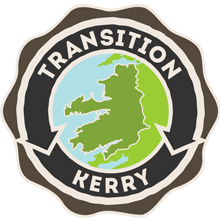FIND YOUR COMMUNITIES RESILIENCE INDICATORS:
Resilience is the ability of a system or community to withstand impacts from outside. An indicator is a way of measuring that. Conventionally, the principle way of measuring a reducing carbon footprint is CO2 emissions. However cutting carbon while failing to build resilience is an insufficient response when you’re trying to address both peak oil and climate change. So how might you be able to tell that the resilience of your community is increasing? Resilience indicators might look at the following:- percentage of food grown locally
- amount of local currency in circulation as a percentage of total money in circulation
- number of businesses locally owned
- average commuting distances for workers in the town
- average commuting distance for people living in the town but working outside it
- percentage of energy produced locally
- quantity of renewable building materials
- proportion of essential goods being manufactured within the community of within a given distance
- proportion of compostable “waste” that is actually composted
While some indicators will be universal, many will be place specific and will emerge from the energy descent plan process.
Taking stock of Local skills and resources. You must start building a picture of your communities local resources Current and potential availability Current and potential requirements – will be key to creating a realistic EDAP. Please Join the skills network of Transition Town Tralee.











